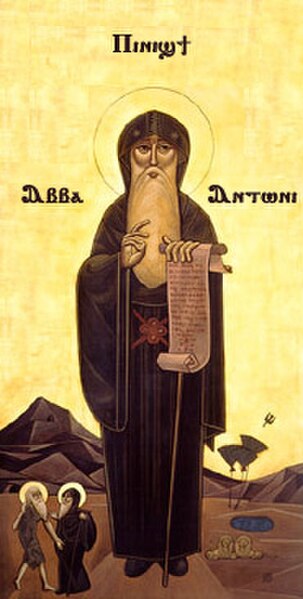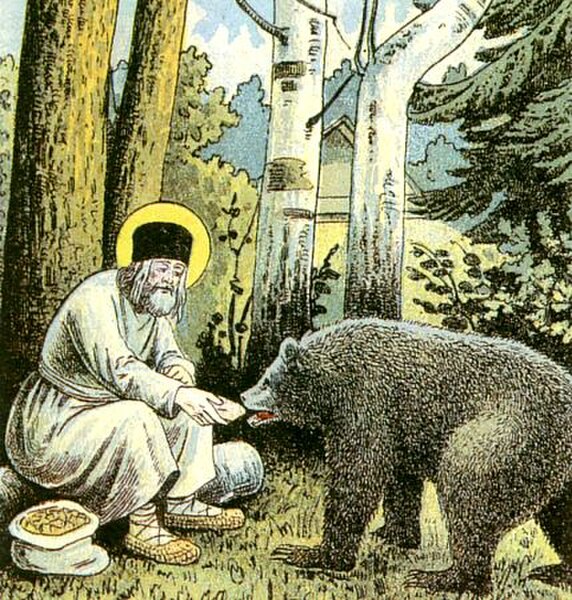The Desert Fathers were early Christian hermits and ascetics, who lived primarily in the Scetes desert of the Roman province of Egypt, beginning around the third century AD. The Apophthegmata Patrum is a collection of the wisdom of some of the early desert monks and nuns, in print as Sayings of the Desert Fathers. The first Desert Father was Paul of Thebes, and the most well known was Anthony the Great, who moved to the desert in AD 270–271 and became known as both the father and founder of desert monasticism. By the time Anthony had died in AD 356, thousands of monks and nuns had been drawn to living in the desert following Anthony's example, leading his biographer, Athanasius of Alexandria, to write that "the desert had become a city." The Desert Fathers had a major influence on the development of Christianity.
Coptic icon of Anthony the Great
"Saint Macarius and a Cherub" from Saint Catherine's Monastery, Sinai, Egypt
Icon of Pachomius
Icon of Arsenius the Great, notable Desert Father
A hermit, also known as an eremite or solitary, is a person who lives in seclusion. Eremitism plays a role in a variety of religions.
Saint Jerome, who lived as a hermit near Bethlehem, depicted in his study being visited by two angels (Cavarozzi, early-17th century)
Eremitic cave in Spain
Church of the hermitage "Our Lady of the Enclosed Garden" in Warfhuizen, Netherlands
St. Seraphim of Sarov sharing his meal with a bear








